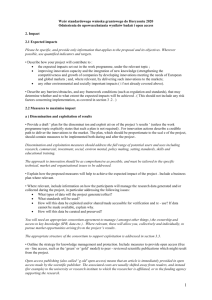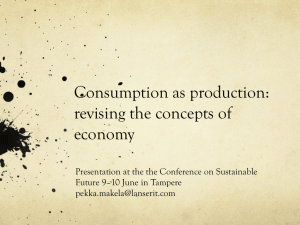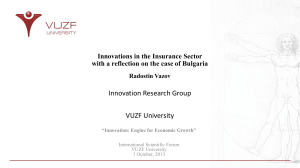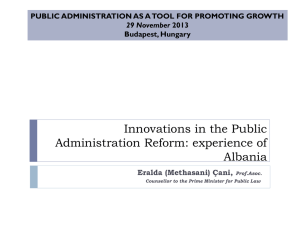Chapter 16: Transformations in Europe, 1500
advertisement
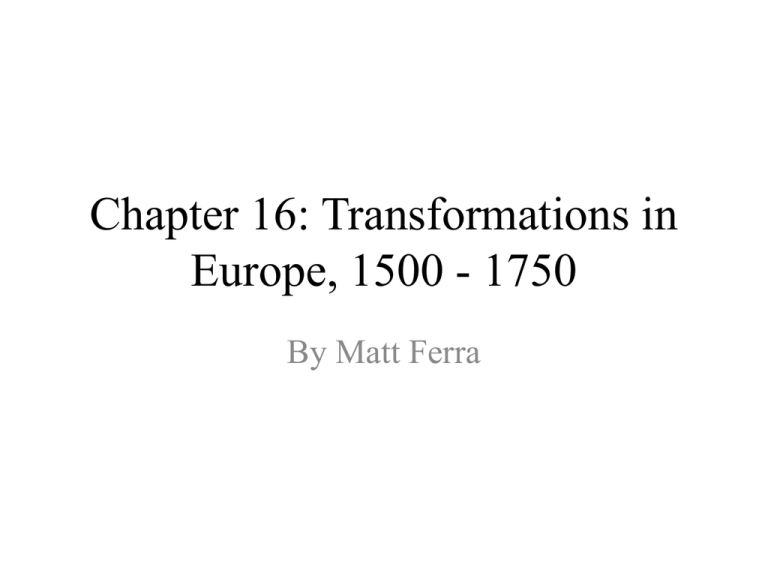
Chapter 16: Transformations in Europe, 1500 - 1750 By Matt Ferra Culture and Ideas • Religious reformation – Pope Leo X: Medici family, oversaw the design and financing of new Saint Peter’s Basilica in Rome. Raised financed by indulgence. – Martin Luther: professor of scripture who objected Leo’s indulgence. – A contest led to Luther burning the papal bull and to the Protestant Reformation Culture and Ideas cont. • John Calvin – The Institutes of the Christian Religion – Agreed with Luther, but denied that human faith could merit salvation – Calvinists elected their own governing committees, councils, dress codes, life styles, and worship styles. Culture and Ideas cont. • Witch hunts – Believed that natural events were the cause of the supernatural – Believed ¾ of women practiced witchcraft – Both the accusers and the accused believed in witches – Widows ad independent-minded women = WITCHES Culture and Ideas cont. • Scientific Revolution – Aristotle: believed that everything was comprised of the four basic elements • The Earth was made of earth and water. The atmosphere was made of air and fire - Pythagoras: a^2 + b^2 = c^2 Culture and Ideas cont. • Nicholas Copernicus (1473-1543): first to develop heliocentric (sun-centered) theory of the solar system – Tycho Brahe, Johannes Kepler, and Galileo Gallilei strengthened this theory – Intellectual and religious leaders wanted authorities to surpress these ideas because they contradicted with the Bible – Scholars like Robert Boyle and Isaac Newton continued to experiment and continue with Galileo’s theories of physics Culture and Ideas cont. • Enlightenment – A scientific movement by “enlightened” individuals over laws, religion, and social hierarchies – Voltaire: “No opinion is worth burning your neighbor for.” Social and Economic Life • The Bourgeoisie: the urban class in France that dominated finance activities (burghers, town dwellers) – Able to buy exotic luxuries • • • • • • Caribbean and Brazilian sugar and rum Mexican chocolate Virginia tobacco North American furs East Indian cotton textiles and spices Chinese tea Social and Economic Life • Bourgeoisie countries – Netherlands: manufacturers, craftsmen, Dutch textile industry – Amsterdam was a major port an Holland’s largest city, as well as its financial center Social and Economic Life • Dutch pioneered joint-stock companies, giving the Dutch East and West India Companies monopolies over trade to the East and West Indies • France and England had their own companies too • The companies sold their shares to individuals to raise large sums for overseas enterprises • Stock exchanges- Italian innovation, transferred to Europe in the 16th century Social and Economic Life • Some bourgeoisie members used their wealth to raise their social status to gain entry in the gentry. – Retired businessmen – Loaned money to peasants – A family could avoid taxation by living in the gentry for 3+ generations • Or purchasing a title from the king Social and Economic Life • Peasants and Laborers – Europeans continued to depend on serfs, but kept them at a distance – Improving agriculture hadn’t really improved since 1300 – Little Ice Age: temperatures dropped slightly but caused problems for crops; starvation – Men made livings as miners, lumberjacks, and charcoal makers – The growing want for wood fuel caused serious deforestation Social and Economic Life • Women and the Family – Status and work were tied to their husbands and families – No arranged marriages – chose own partners Political Innovations • State development – City-states and principalities like the Holy Roman Empire – Tried to build a powerful European empire – failed – Charles V – Holy Roman emperor • Hoped to centralize imperial power and lead a Christian coalition • Halted Ottoman Empire in 1529 • Gave up dream of unification in 1546 Political Innovations • Religious policies – Spanish and French rules defended Catholic tradition against Protestants – King Philip II brought in Spanish Inquisition to stop all who oppressed him – King Henry VIII used his power to disband monasteries and convents Political Innovations • English Civil War • • • • King Charles I Ruled 11 years without Parliament Raised funds with “loans” from wealthy subjects A rebellion forced him to summon a Parliament to approve new taxes • Charles refused to grant certain guarantees • Ordered arrest of critics in House of Commons • War commences Political Innovations • A similar struggle in France – Estates General represented traditional rights of clergy, nobility, and towns – Asserted rights during French Wars of Religion – Raised funds by selling appointments to high government offices Political Innovations • Warfare and diplomacy – Warfare was almost constant in early modern Europe – Monarchs expended vast sums of money, causing widespread devastation and death – Thirty Years War: caused long-lasting depopulation and economic decline – Improves skills in weaponry – Cities built fortifications for command structures – England rose as sea power under King Henry VIII – Balance of power: major European states formed temporary alliances to prevent one state from becoming too powerful Political Innovations • Heavy costs – European rulers increased revenues – Expensive wars caused treasury to default under King Philip II – Silver and gold bullion filled Spain’s treasury temporarily Political Innovations • Dutch revolt – Netherlands rises as economic power – King Philip imposes heavy sales tax and Catholic orthodox – 2 revolts: 1566 and 1572 – Emerged as dominant, commercial power after long war – Caused England to enlarge government’s role in managing the economy




